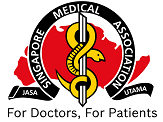Singapore Med J 2013; 54:44-48; http://dx.doi.org/10.11622/smedj.2013011
Morphological variations of papillary muscles in the mitral valve complex in human cadaveric hearts
Gunnal SA, Wabale RN, Farooqui MS
Correspondence: Sandhya Arvind Gunnal, sandhyagunnal@yahoo.com
ABSTRACT
Introduction Papillary muscle rupture and dysfunction can lead to complications of prolapsed mitral valve and mitral regurgitation. Multiple operative procedures of the papillary muscles, such as resection, repositioning and realignment, are carried out to restore normal physiological function. Therefore, it is important to know both the variations and the normal anatomy of papillary muscles.
Methods This study was carried out on 116 human cadaveric hearts. The left ventricles were opened along the left border in order to view the papillary muscles. The number, shape, position and pattern of the papillary muscles were observed.
Results In this series, the papillary muscles were mostly found in groups instead of in twos, as is described in standard textbooks. Four different shapes of papillary muscles were identified – conical, broad-apexed, pyramidal and fan-shaped. We also discovered various patterns of papillary muscles.
Conclusion No two mitral valve complexes have the same architectural arrangement. Each case seems to be unique. Therefore, it is important for scientists worldwide to study the variations in the mitral valve complex in order to ascertain the reason behind each specific architectural arrangement. This will enable cardiothoracic surgeons to tailor the surgical procedures according to the individual papillary muscle pattern.
Keywords: chordae tendineae, heart, left ventricle, mitral valve complex, papillary muscles
Singapore Med J 2013; 54:44-48
Singapore Med J 2013; 54:44-48
REFERENCES
| 1. Skwarek M, Hreczecha J, Grzybiak M, Kosi?ski A. Remarks on the morphology of the papillary muscles of the right ventricle. Folia Morphol (Warsz) 2005; 64:176-82. | ||||
| 2. Grochowski P. [Kszta?towanie si? mi??nia brodawkowatego tylnego w prawej komorze serca w rozwoju osobniczym cz?owieka] (dissertation). Gda?sk: Medical University of Gdansk, 2001. Russian. | ||||
| 3. Victor S, Nayak VM. Variations in the papillary muscles of the normal mitral valve and their surgical relevance. J Card Surg 1995; 10:597-607. http://dx.doi.org/10.1111/j.1540-8191.1995.tb00642.x |
||||
| 4. Standring S. Gray's Anatomy. 39th ed. Edinburgh: Elsevier Churchill Livingstone 2005, 1006-8. | ||||
| 5. Ho SY. Anatomy of the mitral valve. Heart 2002; 88 suppl 4:iv5-iv10. http://dx.doi.org/10.1136/heart.88.suppl_4.iv5 PMid:12369589 PMCid:1876279 |
||||
| 6. Oosthoek PW, Wenink AC, Wisse LJ, Gittenberger-de Groot AC. Development of the papillary muscles of the mitral valve: morphogenetic background of parachute-like asymmetric mitral valves and other mitral valve anomalies. J Thorac Cardiovasc Surg 1998; 116:36-46. http://dx.doi.org/10.1016/S0022-5223(98)70240-5 |
||||
| 7. Madu EC, D'Cruz IA. The vital role of papillary muscles in mitral and ventricular function: echocardiographic insights. Clin Cardiol 1997; 20:93-8. http://dx.doi.org/10.1002/clc.4960200203 |
||||
| 8. Bryant R 3rd, Smedira NG. Papillary muscle realignment for symptomatic left ventricular outflow tract obstruction. J Thorac Cardiovasc Surg 2008; 135:223-4. http://dx.doi.org/10.1016/j.jtcvs.2007.08.034 PMid:18179954 |
||||
| 9. Yousefnia MA, Mandegar MH, Roshanali F, Alaeddini F, Amouzadeh F. Papillary muscle repositioning in mitral valve replacement in patients with left ventricular dysfunction. Ann Thorac Surg 2007; 83:958-63. http://dx.doi.org/10.1016/j.athoracsur.2006.08.045 |
||||
| 10.Maron BJ, Nishimura RA, Danielson GK. Pitfalls in clinical recognition and a novel operative approach for hypertrophic cardiomyopathy with severe outflow obstruction due to anomalous papillary muscle. Circulation 1998; 98:2505-8. http://dx.doi.org/10.1161/01.CIR.98.23.2505 |
||||
| 11. Ranganathan N, Burch GE. Gross morphology and arterial supply of the papillary muscles of the left ventricle of man. Am Heart J 1969; 77:506-16. http://dx.doi.org/10.1016/0002-8703(69)90160-4 |
||||
| 12.Roberts WC, Cohen LS. Left ventricular papillary muscles. Description of the normal and a survey of conditions causing them. Circulation 1972; 46:138-54. http://dx.doi.org/10.1161/01.CIR.46.1.138 |
||||
| 13.Dreyfus GD, Souza Neto O, Aubert S. Papillary muscle repositioning for repair of anterior leaflet prolapse caused by chordal elongation. J Thorac Cardiovasc Surg 2006; 132:578-84. http://dx.doi.org/10.1016/j.jtcvs.2006.06.003 |
||||
| 14. Fumimoto K, Fukui T, Shimokawa T, Takanashi S. Papillary muscle realignment and mitral annuloplasty in patients with severe ischemic mitral regurgitation and dilated heart. Interact Cardiovasc Thorac Surg 2008; 7:368-71. http://dx.doi.org/10.1510/icvts.2008.175125 |
||||
| 15. Kochi K, Okada K, Watari M, Orihashi K, Sueda T. Papillary muscle resection as a treatment for midventricular obstruction. Ann Thorac Cardiovasc Surg 2002; 8:109-11. | ||||


